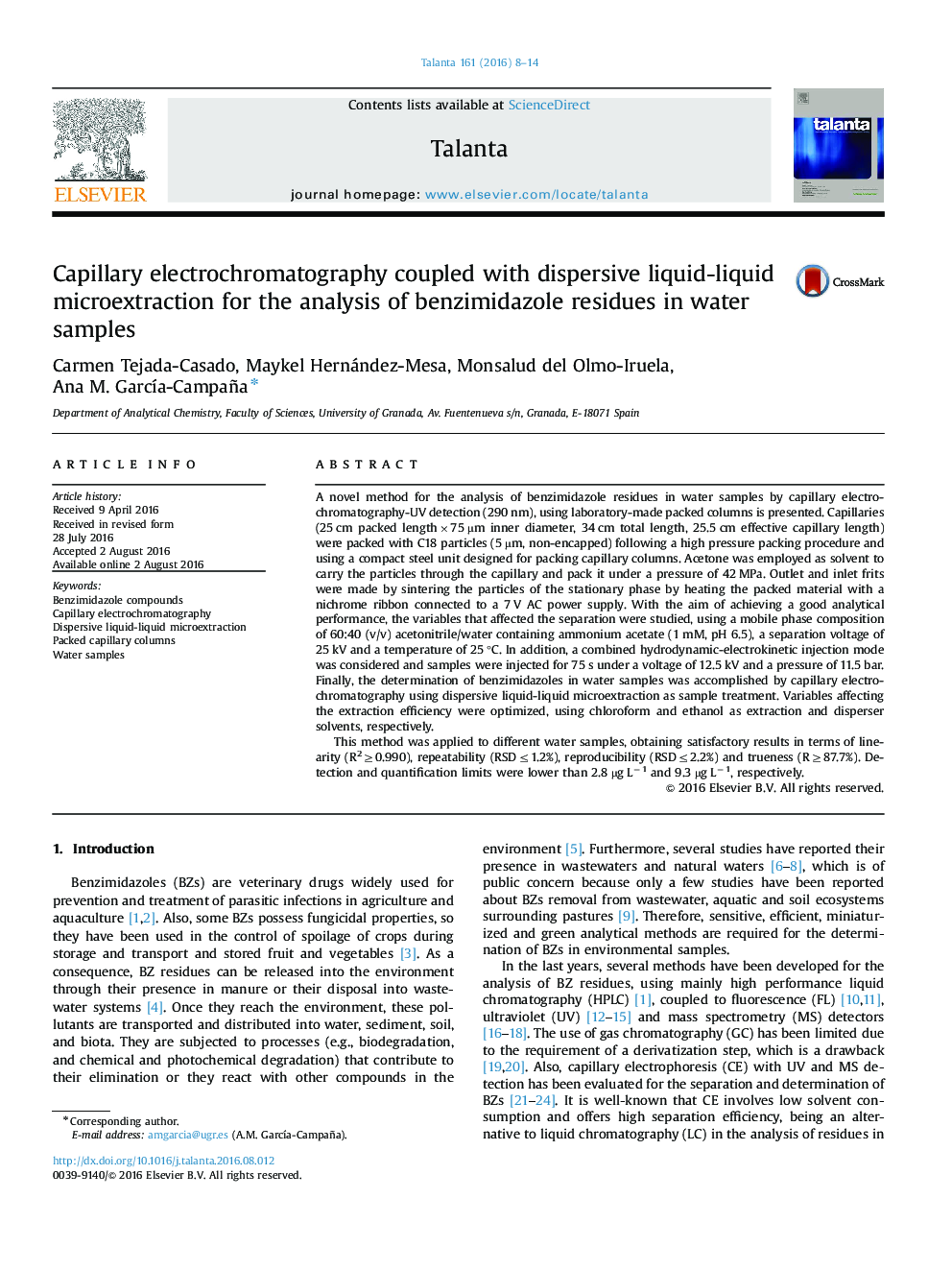| Article ID | Journal | Published Year | Pages | File Type |
|---|---|---|---|---|
| 1241682 | Talanta | 2016 | 7 Pages |
●A novel method for the analysis of benzimidazole residues in water samples by CEC.●Laboratory-made packed columns with C18 particles (5 µm, non-encapped) were used.●A combined hydrodynamic-electrokinetic injection mode was considered.●Dispersive liquid-liquid microextraction was proposed as sample treatment.●Detection limits were lower than 2.8 µg L−1 for all studied analytes.
A novel method for the analysis of benzimidazole residues in water samples by capillary electrochromatography-UV detection (290 nm), using laboratory-made packed columns is presented. Capillaries (25 cm packed length×75 µm inner diameter, 34 cm total length, 25.5 cm effective capillary length) were packed with C18 particles (5 µm, non-encapped) following a high pressure packing procedure and using a compact steel unit designed for packing capillary columns. Acetone was employed as solvent to carry the particles through the capillary and pack it under a pressure of 42 MPa. Outlet and inlet frits were made by sintering the particles of the stationary phase by heating the packed material with a nichrome ribbon connected to a 7 V AC power supply. With the aim of achieving a good analytical performance, the variables that affected the separation were studied, using a mobile phase composition of 60:40 (v/v) acetonitrile/water containing ammonium acetate (1 mM, pH 6.5), a separation voltage of 25 kV and a temperature of 25 °C. In addition, a combined hydrodynamic-electrokinetic injection mode was considered and samples were injected for 75 s under a voltage of 12.5 kV and a pressure of 11.5 bar. Finally, the determination of benzimidazoles in water samples was accomplished by capillary electrochromatography using dispersive liquid-liquid microextraction as sample treatment. Variables affecting the extraction efficiency were optimized, using chloroform and ethanol as extraction and disperser solvents, respectively.This method was applied to different water samples, obtaining satisfactory results in terms of linearity (R2≥0.990), repeatability (RSD≤1.2%), reproducibility (RSD≤2.2%) and trueness (R≥87.7%). Detection and quantification limits were lower than 2.8 µg L−1 and 9.3 µg L−1, respectively.
Graphical abstractFigure optionsDownload full-size imageDownload as PowerPoint slide
